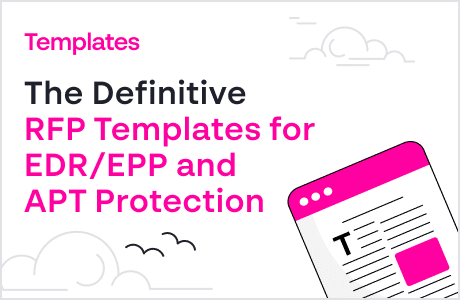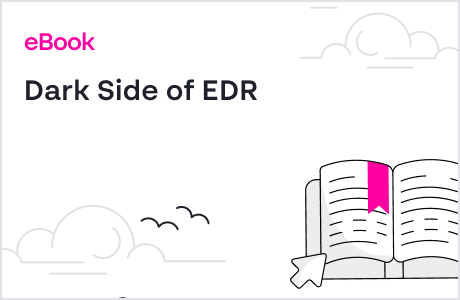Cortex XDR by Palo Alto: Architecture & Capabilities Overview
Palo Alto Cortex XDR is an extended detection and response (XDR) platform that unifies endpoint, network, cloud, and identity threat data to detect and stop cyber attacks. This article breaks down the Cortex XDR architecture, core capabilities, and pricing tiers. You’ll also learn how it integrates with other Palo Alto tools and what alternatives are out there. Whether you’re evaluating XDR platforms or expanding existing ones, this guide will help you assess whether Cortex XDR fits your needs.
What Is Palo Alto Cortex XDR?
Palo Alto’s Cortex XDR is an extended detection and response platform that monitors and manages cloud, network, identity, and endpoint events and data. Cortex XDR combines features for incident prevention, detection, analysis, and response into a centralized platform. It uses AI detection to identify both known malware and zero-day threats and provides root-cause analysis, which reconstructs the entire attack chain and allows immediate process termination. Cortex XDR also integrates with the rest of the Palo Alto Networks ecosystem, for managed services, cloud security, and more.
Check out our guide about XDR security systems, which compares the top 10 XDR systems offered by leading vendors, including Palo Alto, Cisco, Microsoft, McAfee, and more.
What are the Key Features and Capabilities of the Cortex XDR Architecture?
Cortex XDR provides several key capabilities, designed to secure an organization’s networks and devices.
- AI-Driven Threat Detection – Cortex XDR analyzes data across endpoints, network traffic, identities, and cloud environments, using AI and ML to identify signs of compromise.
- Behavioral Analytics and Root Cause Analysis – Cortex XDR monitors user and system activity for anomalies that may indicate malicious behavior. When a threat is detected, Cortex XDR automatically reconstructs the full attack narrative, showing how it entered, spread, and which assets were affected.
- Incident Response – Cortex XDR enables reviewing evidence, threat hunting, investigations, and assessments based on a large volume of forensics data.
- Automated Response Capabilities – Automated playbooks (available through Palo Alto’s XSOAR) can isolate compromised devices, terminate malicious processes, or block harmful traffic in real time. There is also a Live Terminal feature for verifying and containing attacks without disrupting end users.
- Seamless Integration with Palo Alto Ecosystem – Cortex XDR works natively with other Palo Alto Networks products such as Prisma Cloud, NGFW, and Cortex XSOAR. This deep integration provides visibility, centralized policy enforcement, and orchestrated response across the entire security stack.
- Analytics and Insights – Cross-customer insights support identification of supply chain, zero-day and multi-layer attacks. High-risk incidents are identified with scoring.
- USB Device Security – Cortex XDR includes Device Control, a feature designed to monitor and secure USB access to devices. The feature is agentless. It enables organizations to restrict device usage according to endpoint, type, vendor, or Active Directory identities. Device control also enables organizations to limit read and write permissions according to USB device ID.
- Host Firewall and Disk Encryption – Firewalls and disk encryption protect endpoints from malicious traffic and reduce the damage done if attackers bypass firewalls. The Cortex XDR firewall provides controls for inbound and outbound communications. Disk encryption can be directly integrated with BitLocker or FileVault encryption, and organizations can encrypt and decrypt data on endpoint devices. Firewall and encryption settings are managed from the management console.
- Mobile Device Security – For iOS: URL filtering, spam blocking and reporting and network traffic monitoring. For Android: APK file examination to prevent malicious applications from running.
Different XDR security systems offer different architectures. For information about McAfee XDR or Cisco XDR, check out our in-depth guides.
What is the Palo Alto Cortex XDR Pricing and Licensing Model?
Palo Alto Networks provides the following license plans and add-ons:
- Cortex XDR Prevent – Multi-layer endpoint protection, including malware and ransomware blocking, behavior-based and exploit attack detection, device control, firewall protection, and disk encryption.
- Cortex XDR Pro per Endpoint – Tailored endpoint data and third-party logs collection to optimize detection and investigation visibility.
- Cortex XDR Cloud per Host – Cloud-based endpoint protection and detection license with tailored data collection and Kubernetes support. Enhanced data collection is enabled with the Cortex XDR eXtended Threat Hunting Data (XTH) add-on.
- Cortex XDR Pro per GB – Collects endpoint data and can ingest numerous data sources for complete network and user behavior visibility. This license type is often used in conjunction with the Pro per Endpoint license to streamline investigations and remediation.
On top of these, the following add-ons and integration options are available:
- Cortex XDR eXtended Threat Hunting Data (XTH) – Enhanced data collection for granular threat hunting (through XDR Pro).
- WildFire – Detects threats and provides behavior insights.
- VirusTotal – Aggregates threat intelligence results from over 70 antivirus scanners, domain services included in the block list, and user contributions.
- Host Insights – Finds vulnerabilities across endpoints to eradicate threats.
- Compute Units – Additional compute units to run API and cold storage queries.
- Forensic investigation and evidence
- Identity Threat Detection and Response (ITDR Module) – Uncovers insiders, lateral movement, and credential compromise.
- Managed Services – Unit 42 experts work 24/7 to discover advanced threats, perform threat hunting, detection, and response.
- Data retention add-ons, per endpoint or per GB
- Customer Success Plans – Access to materials, support, and best practices
- Syslog – Enable access in your firewall configuration to send Cortex XSOAR audit notifications to your syslog server.
- Slack – The Slack content pack integrates Slack with Cortex XSOAR to send messages and notifications to your slack team.
Pricing for each license and add-on is not publicly available and can be received upon contacting the vendor.
Beyond XDR Security With Cynet’s Autonomous Breach Protection
Cynet All-in-One is an autonomous breach protection platform that works in three levels, providing XDR, SOAR, and 24/7 MDR in one unified solution. Cynet natively integrates these three services into an end-to-end, fully automated breach protection.
Cynet’s XDR layer includes the following capabilities:
- Endpoint protection—multilayered protection against malware, ransomware, exploits and fileless attacks.
- Network protection—protecting against scanning attacks, MITM, lateral movement and data exfiltration.
- User protection—preset behavior rules coupled with dynamic behavior profiling to detect malicious anomalies.
- Deception—wide array of network, user, file decoys to lure advanced attackers into revealing their hidden presence.
Cynet All-in-One can be deployed across thousands of endpoints in less than two hours. It can be immediately used to uncover advanced threats and then perform automatic or manual remediation, disrupt malicious activity and minimize damage caused by attacks.
Get a free trial of Cynet All-in-One and experience the world’s only integrated XDR, SOAR and MDR solution.
FAQs
Cortex XDR integrates endpoint, network, cloud, and identity into a single platform. Traditional EDR tools typically focus only on endpoint activity and often operate in isolation, relying heavily on agents installed on endpoints to detect and respond to threats. A unified view helps detect sophisticated attacks that may span multiple domains.
Cortex XDR is an enterprise-grade system. Due to its complexity and depth, SMBs and MSPs might find it overwhelming and unsuited for their needs. Vendors like Cynet offer XDR solutions tailored to medium-sized businesses and MSPs, providing a high return on investment.
Cortex XDR is designed to detect a wide array of threats. These include fileless attacks, malware, insider threats, and ransomware.
Cortex XDR integrates natively with Palo Alto’s broader security ecosystem. It also supports third-party integrations through APIs and standard protocols.
Cortex XDR applies AI and ML to behavioral data gathered from endpoints, network, cloud, and identities, enabling it to detect stealthy or unknown threats. It focuses on context and multi-layered analysis, understanding the intent and impact of actions across processes, users, and devices.
Cortex XDR supports deployment across cloud-native, on-premise, and hybrid environments.
Cortex XDR and CrowdStrike are generally suited for large-scale enterprises with complex environments. Cortex XDR also offers deeper integrations across Palo Alto’s ecosystem. Cynet appeals to mid-sized and smaller security teams and MSSPs with its all-in-one and flexible approach and easier onboarding.
Related Posts
Looking for a powerful, cost effective XDR solution?
- Full-Featured XDR, EDR, and NGAV
- Anti-Ransomware & Threat Hunting
- 24×7 Managed Detection and Response




